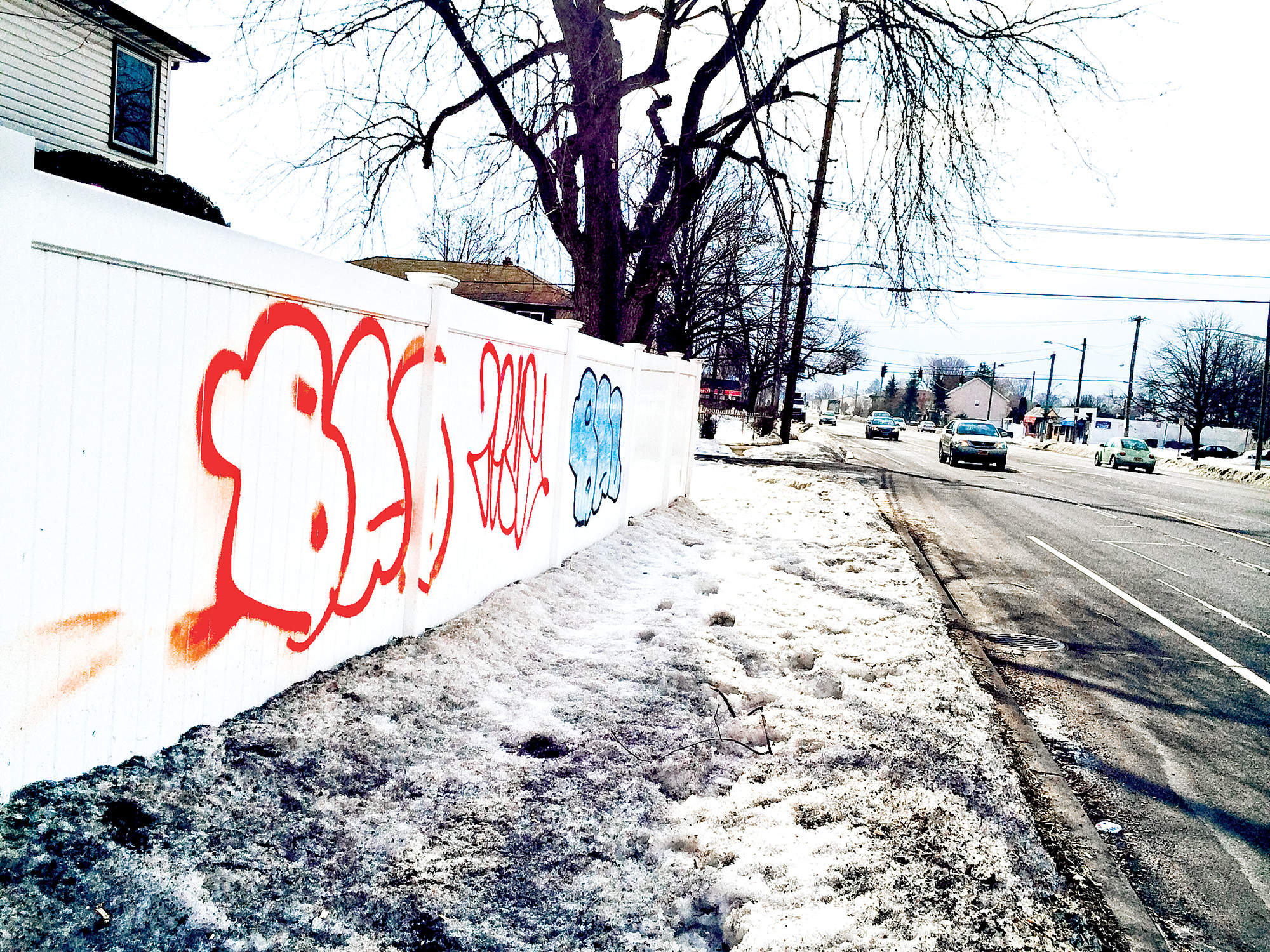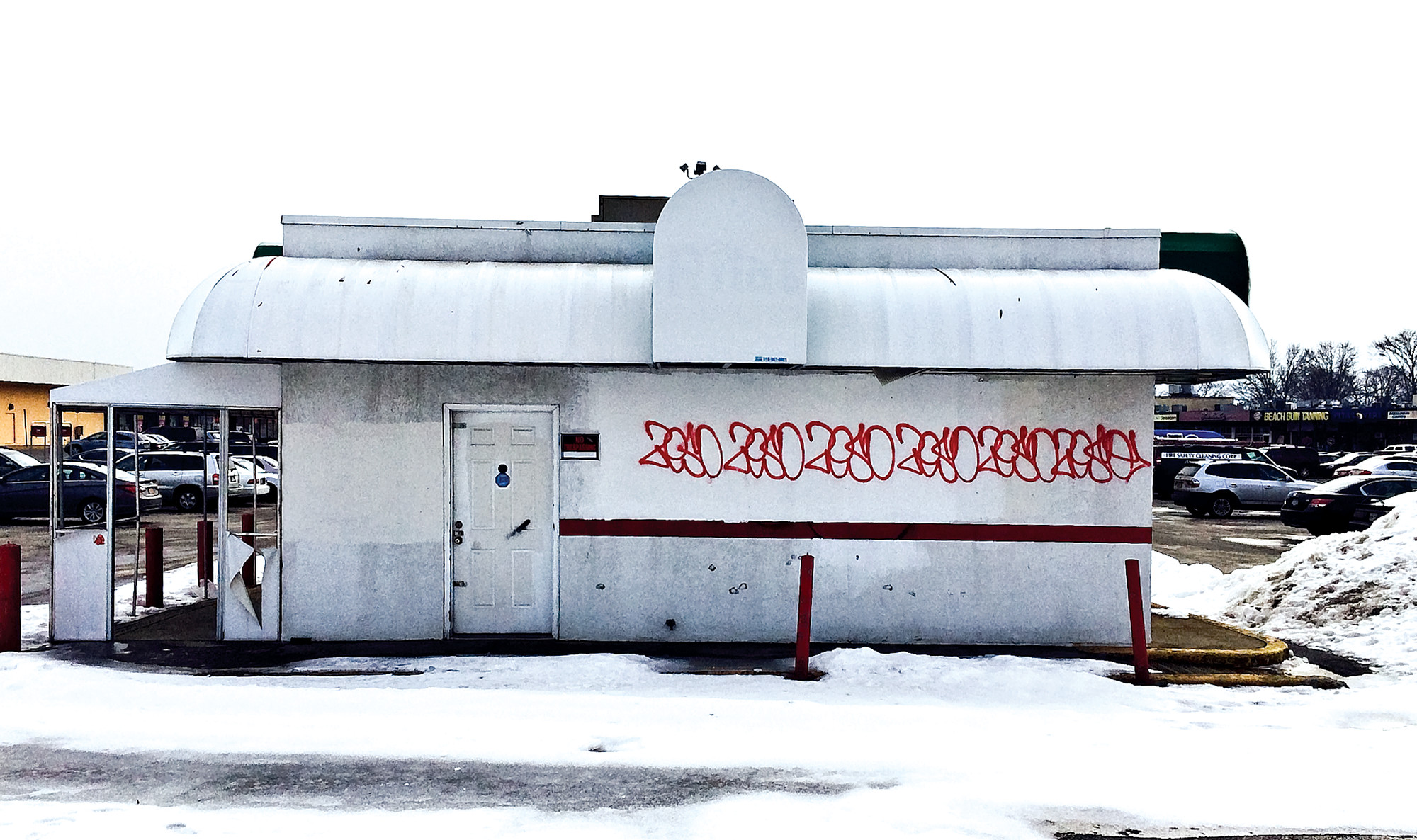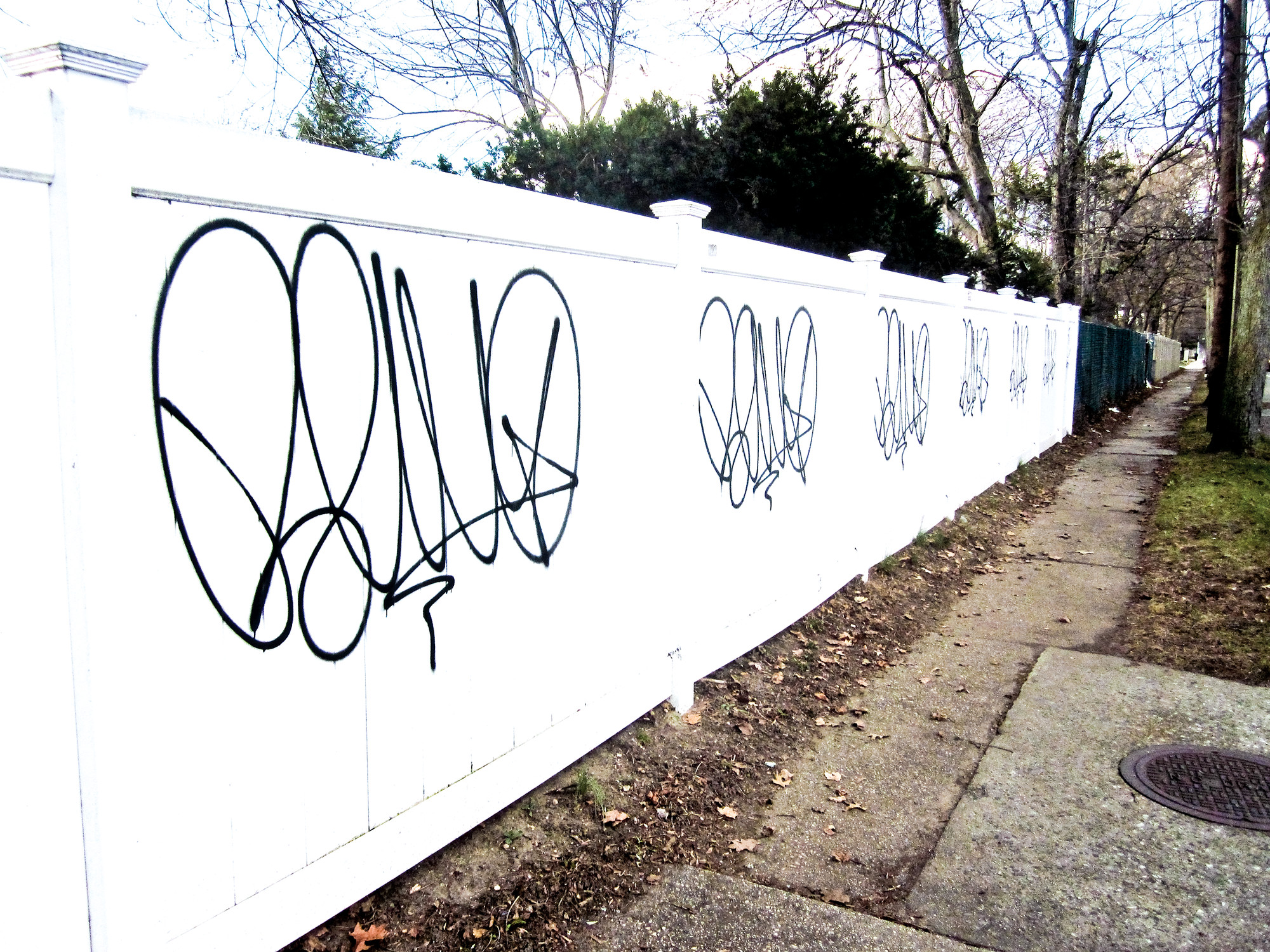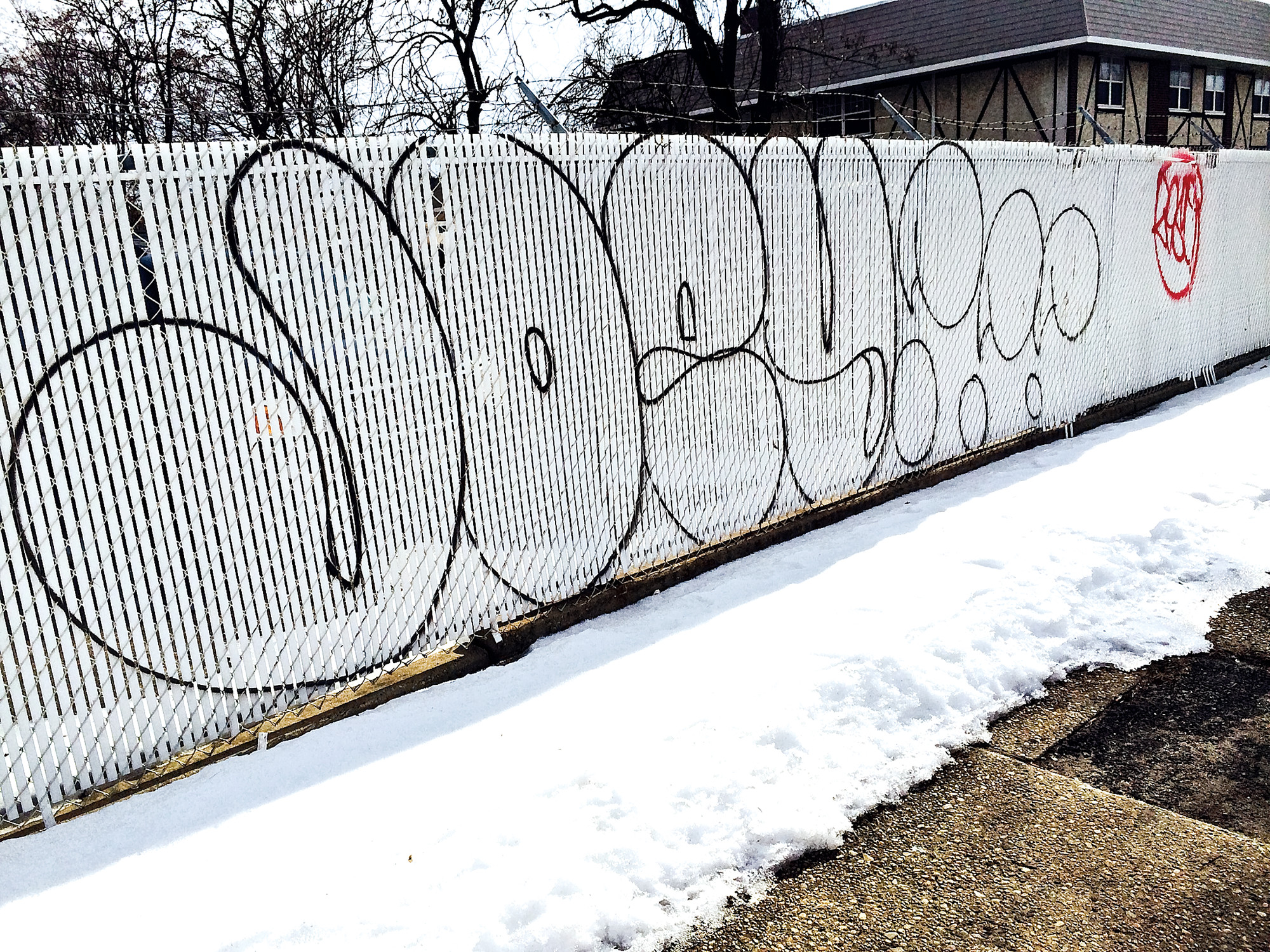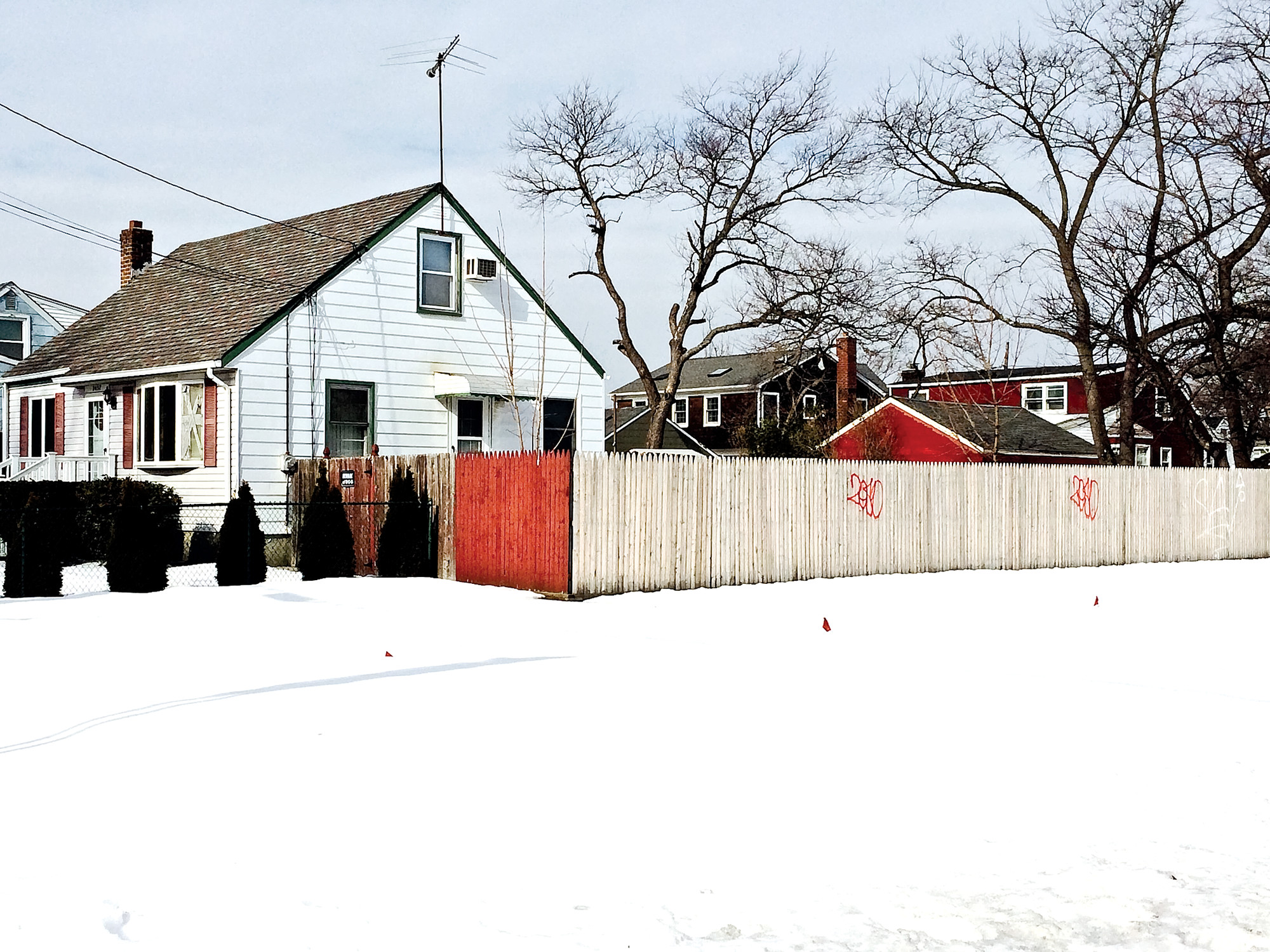Going on the offensive in battle against graffiti
NCPD details arrest of two E.M. teens last month
An unwelcome sight has made its way into the East Meadow landscape in recent weeks, one that residents complain has disrupted the suburban feel of the community they know and love — graffiti.
No major road has been exempt. Fences, buildings, utility boxes, mailboxes and street signs along East Meadow Avenue, Front Street, Hempstead Turnpike and, most noticeably, Merrick Avenue and Newbridge Road, have been spray-painted with “tags,” or signatures, though none appear to be racially or ethnically charged.
The recent spike began in December. While graffiti has been a sporadic problem in East Meadow for years, local elected officials and residents agree that this is among the worst instances they can remember, and what has most alarmed people is that the defacement has extended onto residential properties, which homeowners are responsible for cleaning up.
Nassau County police are aware of the problem, and arrested two East Meadow teenagers last month after an officer saw them spray-painting graffiti on Hempstead Turnpike, according to Michael Bitsko, a detective in the NCPD’s public information office. He said that an investigation is under way to determine whether the duo is responsible for other graffiti in the community.
Conversation about the problem has circulated widely on social media, and local legislators Norma Gonsalves, of the Nassau County Legislature, and Gary Hudes, of the Town of Hempstead, say they have been inundated with complaints.
“Lived here for the better part of my 46 years and it disgusts me and breaks my heart to see this happening here,” Elizabeth Cusano Walsh wrote on the Herald’s Facebook page, after residents were asked to share their thoughts on the subject.
Nancy Widman, a lifelong East Meadow resident, noted that the outbreak of graffiti has gone hand in hand with an increase in abandoned buildings in the community. It is up to parents, and even educators, she said, to impress upon children the importance of keeping the neighborhood clean and preserving its suburban nature. “I love my town,” Widman wrote. “I don’t love seeing it marked up. We should beautify it. Not destroy it.”

 45.0°,
Mostly Cloudy
45.0°,
Mostly Cloudy 